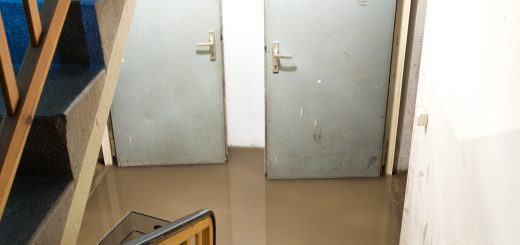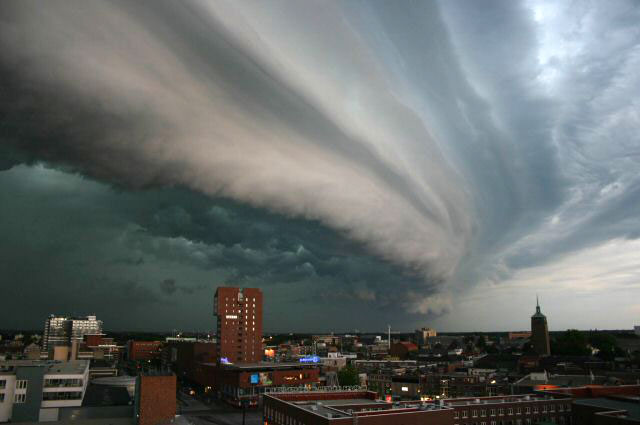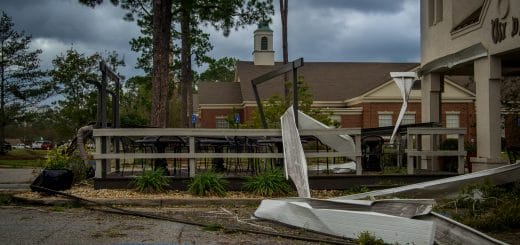What Causes a Bomb Cyclone? Where and When does it happen?
Powerful storms that intensify quickly are known as bomb cyclones. The impacts of bomb cyclones are equally powerful, ranging from hurricane-speed winds and heavy snowfall to torrential rains and coastal floodingFlooding is the overflow or accumulation of water in areas t... More. What causes these daunting forces of nature can be readily explained.
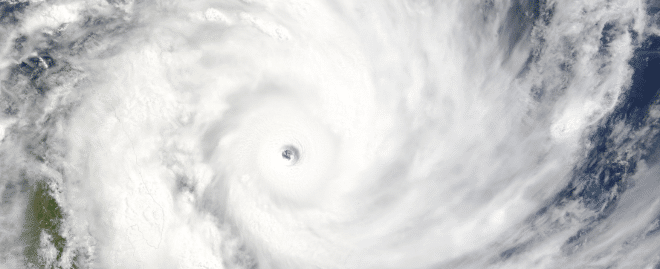
A Bomb Cyclone
What is a bomb cyclone?
The meteorological terms “bombogenesis” and “cyclogenesis” are the genesis for the term “bomb cyclone”. During a bomb cyclone, the central pressure rapidly drops at least 24 millibars in 24 hours. A warm air mass, such as warm air over oceans, collides with a cold air mass, creating the bomb cyclone.
Where do bomb cyclones occur?
In the US, the Eastern Seaboard is where bomb cyclones are most common. Snowfall can be expected as a result of these winter hurricanes, especially throughout North Carolina, Virginia, Delaware, New Jersey, Pennsylvania, New York, Connecticut, Massachusetts, Maine, and Rhode Island.
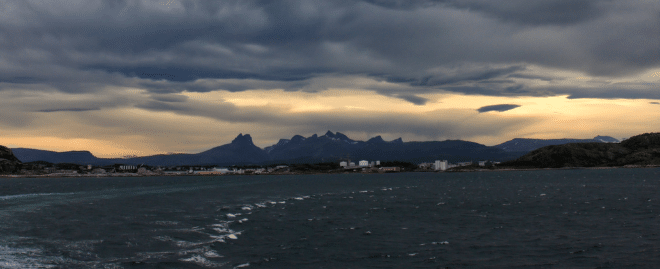
Where do bomb cyclones occur
What are the impacts of bomb cyclones?
The amount of snowfall expected during a bomb cyclone is hardly meager. Snow accumulations can total 20 inches or more in states along the east coast, particularly Eastern Massachusetts, Long Island, Rhode Island, and Cape Cod. States, like New York, can see six inches or more of snow.
Heavy snowfall from six to 12 inches during these winter hurricanes are common occurrences from the eastern shore of Maryland and extending up toward Maine. Coastal New England is no stranger to bomb cyclones either, pummeled by one to two feet of snow and blizzard conditions.
Blizzards worsened by large accumulations of snow leadLead is a heavy metal that can be toxic to humans, especiall... More to travel advisories. Meteorologists predict airport closures during a bomb cyclone. Boston’s Logan International Airport, for instance, faced a potential shutdown amid the storm. Flight cancellations along routes on the east coast occur.
Icy roads that develop in the wake of a bomb cyclone are hazardous to drivers and can be the cause of vehicle crashes. Sheets of ice are unsurprising, given that temperatures during a bomb cyclone can plummet 15 to 25 degrees below average in most places.

What are the impacts of bomb cyclones
What weather conditions cause a bomb cyclone?
Weather conditions must be ideal in order for a bomb cyclone to form and strengthen. Three primary ingredients are necessary for the formation of a bomb cyclone: high levels of heat, abundant moisture, and rising air. When these conditions are present, a cyclone undergoes bombogenesis.
As previously mentioned, bomb cyclones primarily affect the US Eastern Seaboard. This is due to the fact that storms in midlatitude (a temperate area north of the tropics, which includes the whole continental US) derive energy from significant temperature fluctuations.
During the winter season along the east coast, the land is cool, while the Gulf Stream currents are warm; over the ocean, heat and moisture are plentiful. These differences in temperature leadLead is a heavy metal that can be toxic to humans, especiall... More to a naturally potent thermal contrast and the phenomenon known as a bomb cyclone.
The formation of a bomb cyclone can be further explained by factoring in the cool continental air that moves overhead—and this creates a major difference in temperature. As a result, the lower atmosphere becomes unstable and buoyant. As air rises and condenses, clouds and precipitation form.
Conditions must also be favorable above the surface in order for a bomb cyclone to grow in strength. Upper-level winds, called jet streaks, with the addition of high-amplitude waves occurring within the storm tracks, are responsible for pushing air upward.
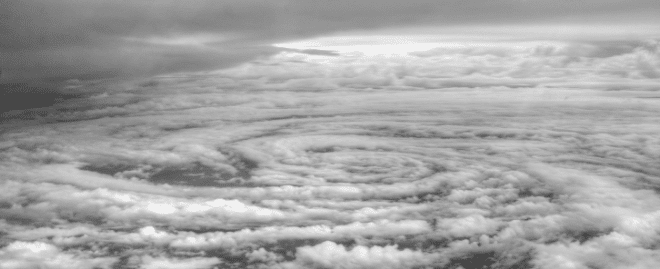
What weather conditions cause a bomb cyclone
Warm air rises at a rapid rate when a strong jet streak extends beyond a developing low-pressure system. The feedback pattern that is subsequently created allows pressure to drop at a fast rate, especially at the center of the system. Along with dropping pressure come fierce storm winds.
Hurricane-force winds accompany bomb cyclones. The speed of hurricane-force winds produced by bomb cyclones can reach over 75 to 80 miles per hour. A range of wind-swept damage is a likely outcome in the areas through which a bomb cyclone rips.
Upper atmosphere winds blowing at 150 miles per hour combined with extremely warm sea surface temperatures offshore (which amounts to 2 to 4 degrees Fahrenheit warmer than normal) and an unstable atmosphere are the optimal weather components for the formation of a bomb cyclone.
Along with wind damage caused by a bomb cyclone, property owners along the east coast can expect beach erosion, coastal floodingFlooding is the overflow or accumulation of water in areas t... More, and storm surges. Blizzard conditions, too, are an anticipated event. FloodingFlooding is the overflow or accumulation of water in areas t... More can leadLead is a heavy metal that can be toxic to humans, especiall... More to a range of water damage issues for residents.
Flooded streets with fast-moving water are a common sight when a bomb cyclone pummels areas, like the east coast. Homeowners may experience indoor floodingFlooding is the overflow or accumulation of water in areas t... More, an event that can leadLead is a heavy metal that can be toxic to humans, especiall... More to substantial water damage and costly repairs if the cleanup is delayed.
Fortunately, property owners have access to reputable restorationRestoration is the process of returning a property to its pr... More professionals. A local disaster restorationRestoration is the process of returning a property to its pr... More company with teams of experienced crews will clean up the storm damage and return your property to its pre-loss condition.
Whether fierce storms flood the basement or high winds cause damage to the roof, restorationRestoration is the process of returning a property to its pr... More technicians are equipped with the tools and techniques to quickly repairRepair is the act of fixing or restoring damaged property, m... More the destruction. If lighting starts a fire, these crews perform fire damage restoration.

RestorationRestoration is the process of returning a property to its pr... More technicians
Storm damage cleanup includes providing emergency board up services and stabilizing the property. Professionals remove debris, such as fallen tree branches or roof shingles, from around the property and restore the structural and exterior building materials destroyed by the storm.
RestorationRestoration is the process of returning a property to its pr... More technicians are also proficient in water damage restorationWater damage restoration is the professional process of clea... More, which should be undertaken quickly after any type of floodingFlooding is the overflow or accumulation of water in areas t... More has occurred. In the event moldMold is a type of fungus that grows in damp or humid conditi... More colonies have developed after the floodingFlooding is the overflow or accumulation of water in areas t... More, our quality mold remediationMold remediation is the process of identifying, removing, an... More services will eliminate the sporesSpores are microscopic reproductive units of fungi or mold t... More.
Water damage cleanup specialists extract all standing water using advanced machinery. Powerful dehumidificationDehumidification is the process of reducing and controlling ... More equipment and proven dryingDrying is the process of removing moisture from materials, s... More techniques thoroughly dry all areas of the property. Technicians lastly decontaminate the space, since bacteria teeming in floodwater creates unsafe living conditions.










